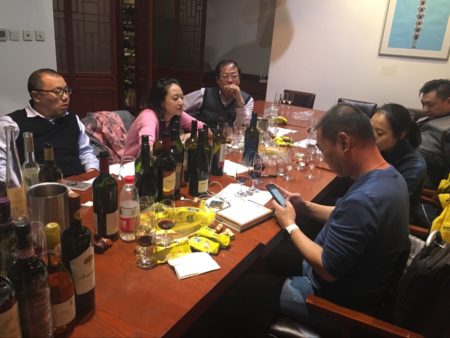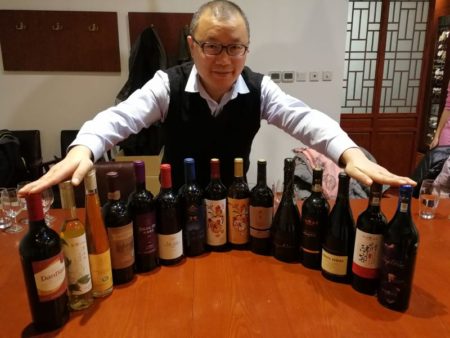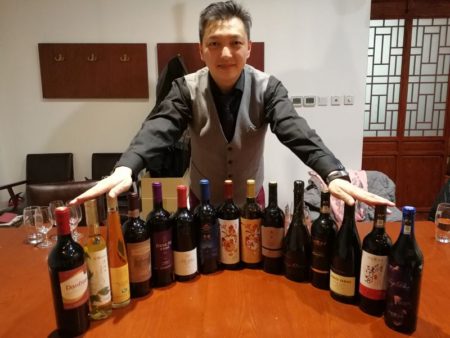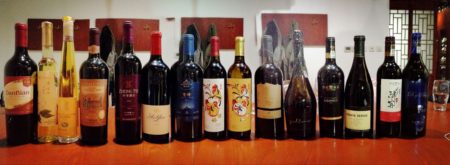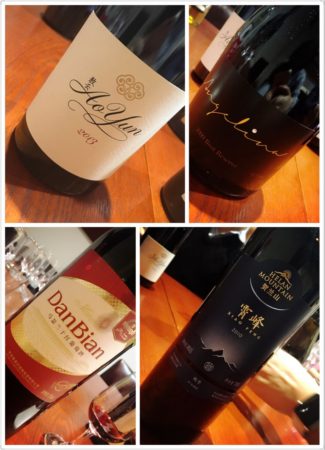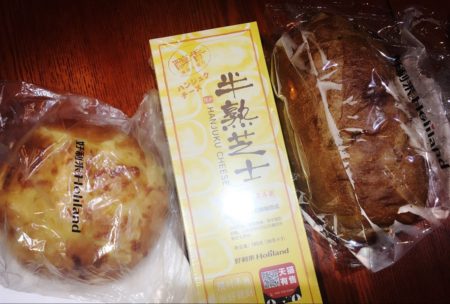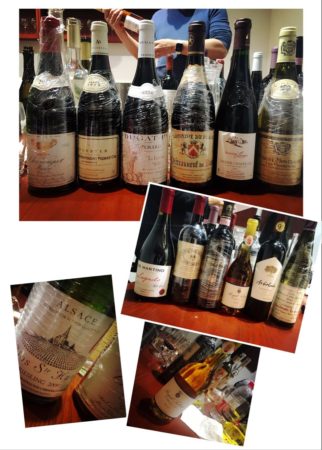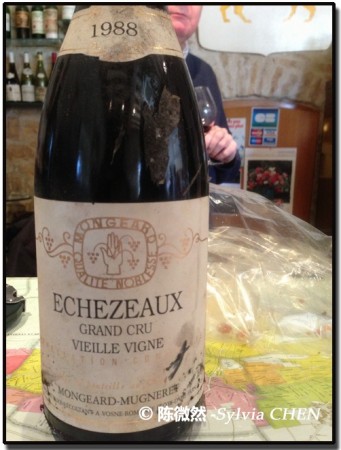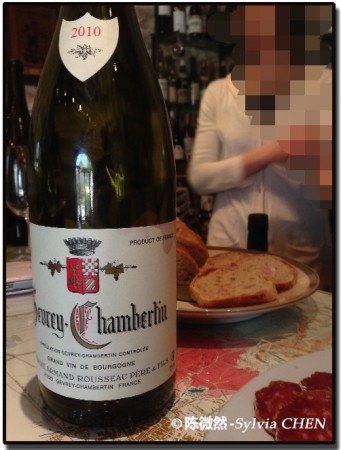简希丝.罗宾逊在英国《金融时报》上的专栏文字,写得还比较全面,赞一个.
只是后面有个错误,是简希丝•罗宾逊弄错:
“在很长一段时间里,所谓的中法合资王朝酒业(Dynasty Winery)一直以能够生产品质非凡的中国葡萄酒,以及拥有德高望重的中国酿酒师而为人艳羡。葡萄酒经销商圣皮尔(ASC)热衷于收购这一产业但交易以失败告终,而后它被拥有邻近土地的台湾家族所收购。”
这个不是天津的”中法合资王朝酒业”而是怀来的”中法酒庄”. 刚被台湾的电子业巨头所收购并控股.Jancis Robinson她的信息有误.
***********************************
中国葡萄酒的酒香
作者:英国《金融时报》撰稿人 简希丝•罗宾逊
2010年04月29日 06:04 AM

最近48小时的中国之行不足以对当地葡萄酒行业蓬勃的发展进行任何意义上的深入探究,但足以让我意识到,中国产葡萄酒终于迎来了激动人心的新发展。
我前两次造访中国分别是在2002年和2008年,而第二次访问曾令我倍感沮丧,当世界其它地方每一季都能酿制出优质葡萄酒时,中国的葡萄酒品质却似乎已停滞不前。典型的中国葡萄酒口感仍像是品质极差的波尔多红(Bordeaux Rouge):有时竟分辨不出这是葡萄酒,因过量生产而缺乏厚度、因果实欠熟而显得酸涩,因为迷恋解百纳赤霞珠(Cabernet Sauvignon)葡萄顽强的生命力而口感生硬。赤霞珠在中国新葡萄酒产区葡萄作物中占据统治地位。在我看来,这种葡萄酒恰恰最不可能博得初尝葡萄酒者的青睐,也最不可能与中国食物形成完美的搭配。
但这一次,我终于邂逅了一款100%中国葡萄酿制的葡萄酒,它无疑将成为向任何人——例如,迄今为止从未尝过这款葡萄酒的10亿中国人——推广葡萄酒的绝佳之选。其令人信服的水果基调,入口顺滑的浆果口味以及令人振奋的酸爽感受,适合作为甜、淡、辣、浓各种形式中国小菜的陪衬。唯一的麻烦在于,这是一款白葡萄酒,因此,理论上对中国消费者的吸引力有限。
这款葡萄酒就是“协奏曲”(Symphony),一款合资产品。它由怡园酒庄(Grace Vineyard)酿造,怡园酒庄总部设在山西省,是目前为止中国最成功的红葡萄酒生产商,它的背后是一家澳大利亚红酒商和一位香港富翁。不过这款年轻而富有活力的半干麝香葡萄酒的创意来自桃乐丝中国(Torres China),一家较为成功的销售公司。桃乐丝中国是加泰罗尼亚最有影响的葡萄酒商米高·桃乐丝(Miguel Torres)早在1997年凭借其卓越远见成立的。他们首先酿制了1万支2008年份的协奏曲,并在第二个月推出偏干型的2009年份酒之前销售一空。从2010年份起将会有红葡萄酒协奏曲面市。
我还被两个新葡萄酒庄出产的真正鼓舞人心的红葡萄酒所打动。翡翠谷(Jade Valley),一个彻头彻尾的现代水疗度假村和葡萄酒庄,同样位于陕西,被匠心独具地安排在田园风味十足的山谷中,距离著名的兵马俑风景区不远,为中国最有影响力的建筑师之一马清运所有。他们的2006年黑比诺(Pinot Noir)是其中最大的惊喜:它精致而果味十足、气味芬芳并具有纯正的黑比诺口感(无论在哪里种植都需要相当的技巧,更不要说在中国的山野之地)。这显然是一家值得引起任何人注意的新生代小型中国葡萄酒生产商。
银色高地(Silver Heights)位于宁夏的贺兰山区,是现代中国葡萄酒产业涌现的又一亮点。银色高地的阙歌(Summit)波尔多混酿红葡萄酒是由高源(Emma Gao)——中国极少数女性酿酒师酿造的。她曾在波尔多受训,这一点显而易见。海拔1200米的葡萄园属于她的家族所有,少量葡萄酒由她曾经效力的桃乐丝分销。
宁夏似乎是最近一轮中国葡萄园投资最热门的省份。这里的气候比东部沿海的山东更为干燥,山东是众多现代首批葡萄园的所在地。而冬季的气温又不像西部偏远的新疆穆斯林区,很少降到生命线以下,在那里每年秋季必须将葡萄藤埋起来才能存活,而且距离中国主要的葡萄酒饮用人口中心又太遥远。
保乐力加(Pernod Ricard)也在贺兰山区进行了投资。在早期涉足龙徽(Dragon’s Seal)品牌后,这家法国跨国公司如今与宁夏当地公司以及一个澳中团队一起建立了合资企业,以贺兰山为品牌名生产了一系列优质品种(中国法律至今尚无对称谓和产地名的保护)。由于这里冬季严寒,保乐力加团队正考虑种植解百纳塞佛尼(Cabernet Severny),一种结合蒙古种山葡萄基因的俄罗斯赤霞珠。
通天酒业(Tontine Wines)是一家专门酿制各种山葡萄酒的公司,这种山葡萄生长在中国东南部的江西省。公司以通天或通天红商标销售的葡萄酒中有近四分之三为甜酒。
毫无疑问,还有更多的外国蜜蜂正围着蜜罐嗡嗡作响,这个蜜罐就是极具潜力的中国葡萄酒产业。总部设在北京的替代能源公司宏腾能源(Honiton Energy)计划投资5千万-1亿美元,用于中国葡萄酒的运作,其中包括“从新西兰或澳大利亚相对优质、大型但存在财务困境的酒庄进口大量葡萄酒,并在中国重新进行品牌命名”。这也许是在它们的中国葡萄园建立之后的权宜之计。
中国精品葡萄酒市场的目光都集中在去年成立的一家合资公司身上。该公司由拉菲酒庄所有人(拉菲在中国的商业成功堪称一个真正的奇迹)和中国企业巨头中信集团共同组建。让很多人吃惊的是他们选择在湿润的山东蓬莱投资,这里还有另一家波尔多——中国合资公司。大好河山葡萄酒业公司(Great River Hill winery)的主要合作伙伴是保加利亚贝萨山谷(Bessa Valley)的共同所有人卡尔·海因茨·赫伯特曼博士(Dr Karl-Heinz Hauptmann)和位于圣-达美隆(St-Emilion)出产嘉芙丽永(la Gaffelière)的卡农酒庄(Château Canon)的史蒂芬·冯·尼佩希(Stephan von Niepperg),以及具有专业实践经验的波尔多酿酒师马克·德沃金(Dworkin of Bordeaux)的。第一批葡萄酒预计在2012年问世。
在很长一段时间里,所谓的中法合资王朝酒业(Dynasty Winery)一直以能够生产品质非凡的中国葡萄酒,以及拥有德高望重的中国酿酒师而为人艳羡。葡萄酒经销商圣皮尔(ASC)热衷于收购这一产业但交易以失败告终,而后它被拥有邻近土地的台湾家族所收购。但是在中国成功的关键在于销售。不管怎么说,所有这些满怀希望的新兴葡萄酒生产商都没有现成的网络销售他们的葡萄酒。只有行业巨头中粮集团(Cofco)以及旗下的长城(Great Wall)和优质品牌君顶酒庄(Château Junding)、张裕(Changyu)、王朝和龙徽能够承担在丛林密布的中国葡萄酒市场打开大规模销售之路所必需的费用。
Promising newcomers in China
3 Apr 2010 by Jancis Robinson/FT
Forty-eight hours in China recently was not enough for any profound investigation of the exploding wine scene there but it was enough for me to realise that at long last there are some exciting new developments in Chinese-grown wine.
My two previous visits had been in 2002 and 2008 and on the second I had been deeply depressed by the fact that, while the rest of the world was making better wine with every vintage, the quality of Chinese wine seemed to have stagnated. The typical Chinese wine still tastes like a very poor quality Bordeaux Rouge: sometimes not recognisably vinous, thin from overproduction, tart from underripeness, and often tough, thanks to an obsession with the unyielding Cabernet Sauvignon grape that has dominated vineyard plantings in China’s new wine-drinking era. This seems to me to be precisely the sort of wine least likely to woo a neophyte wine drinker, and least likely to be a good match for Chinese food.
But at long last I encountered a wine made from 100% Chinese grapes that would surely be an absolutely perfect introduction to wine for anyone such as the more than a billion Chinese who have never so far tasted it. And with its convincing core of fruit, easy grapiness and sizzling crispness, it would be a suitable foil for all manner of mild, spicy, sweet and sticky morsels destined for their chopsticks. The only trouble is that it is white, and therefore in theory of limited appeal to Chinese consumers.
Symphony, the wine in question, is a joint venture. It is made at Grace Vineyard, by far the most successful producer of Chinese red wine to date, based in Shanxi province, with an Australian winemaker and a Hong Kong fortune behind it. But the idea for this lively, young off-dry Muscat came from Torres China, one of China’s more successful distribution companies, set up with great prescience by the dominant Catalan winemaker Miguel Torres as long ago as 1997. They made 10,000 bottles of the first, 2008 vintage and saw them sell out long before next month’s launch of a slightly drier 2009. From the 2010 vintage there will be a red version.
I was also heartened to come across truly inspiring red wines from two new wineries. Jade Valley, a thoroughly modern spa resort and winery, also in Shanxi, is artfully set in a particularly bucolic valley (pictured) not far from the site of the famous terracotta warriors by owner Qingyun Ma, one of China’s most influential architects. I tasted the current release Sauvignon Blanc, which really does taste fresh, fruity and like a Sauvignon Blanc; a barrel sample of their 2009 Cabernet that was apparently made with help from Opus One winemaker Michael Silacci from Napa Valley, its 2006 counterpart that was perfectly respectable, and a 2006 Pinot Noir that was the biggest shock of all. This was delicate, fruity, perfumed and did actually taste of Pinot Noir (quite a feat for a Pinot Noir grown anywhere, let alone in the wilds of China). This is clearly a small, newish Chinese producer that is worthy of anyone’s attention.
And then Silver Heights, up in the Helan Mountain region of Ningxia province west of Shanxi, is another bright light to have emerged on the modern Chinese wine scene. Silver Heights’ Summit red Bordeaux blend is made by one of China’s few female winemakers Emma Gao. She trained in Bordeaux and it certainly shows. The 2007 has the most delightfully natural fragrance and delicacy while the 2008 is clearly more ambitious. The vineyard, at 1,200 m altitude, belongs to her family and the small quantity made is distributed by Torres, for whom she once worked.
Ningxia seems to be the most popular province for the latest round of investment in Chinese vineyards. The climate here is much drier than that of Shandong province on the east coast, where so many of the first vineyards of the modern era were located. Yet winter temperatures rarely fall as fatally low as in Xinjiang in the far west, where vines have to be banked up for survival every autumn, and which is so far from China’s main centres of wine-drinking population. (This is the region with a considerable Muslim population. The Chinese government is keen to see the wine enterprises that have so far been established here, including the vast Suntime, play their part in improving the local economy, which is seen as an important route to soothing the region’s ethnic unrest.)
Pernod Ricard have also invested in Helan Mountain. After an early involvement in the Dragon’s Seal brand, the French multinational has now set up in a joint venture with locals in Ningxia province and an Australo-Chinese team is already making a range of solid varietals using Helan Mountain as a brand name. (Chinese laws on appellations and the protection of place names are so far non-existent.). Jacob’s Creek winemaker Phil Laffer, who has spent some time there, told me that the principal challenges are convincing local farmers to grow grapes for optimum wine quality rather than maximum yield (an endemic problem throughout China), some less than satisfactory trellising techniques that leave the grapes so close to the ground that they sometimes need to have the soil rinsed off them, and an inconveniently wide variation in ripeness levels. Because of the cold winters here, the Pernod Ricard team are considering planting Cabernet Severny, which incorporates genes from the Mongolian species Vitis amurensis.
One company, Tontine Wines, specialises in wines made from all-amurensis vines grown in Jiangxi province in the south east of China. Nearly three quarters of the wines they sell under the Tongtian and Tongtian Hong labels are sweet and they have had such sales success that this year they are planning to increase annual production from19,000 tonnes to 39,000 tonnes.
Doubtless many more foreign bees are currently buzzing round the honeypot that is the potential for Chinese wine. Honiton Energy, an alternative energy company based in Beijing, plans to invest $50-100 million in establishing a Chinese wine operation that will include importing a ‘big volume of wine from a reasonably good, large, but financially troubled winery in either New Zealand or Australia, and rebrand[ing] it in China. The bulk of our investment here to be spent in marketing.’ This is presumably to tide them over while their Chinese vineyards are established.
The eyes of the fine-wine market in China are on the joint venture announced last year between the owners of Château Lafite (whose French wines’ commercial success in China has been truly astounding) and the Chinese giant CITIC group. To the surprise of many, they have chosen to invest in Penglai in humid Shandong, as has another Bordeaux–Chinese joint venture. Great River Hill winery has been established with Laixi city with initial plantings of 16 hectares of Cabernet Sauvignon last spring and will be supplemented by a further 84 ha of other varieties while a winery is built. The main partner is Dr Karl-Heinz Hauptmann, co-owner of Bessa Valley in Bulgaria with Stephan von Niepperg of Ch Canon la Gaffelière in St-Émilion, with practical expertise from Marc Dworkin of Bordeaux. The first wines are expected in 2012.
For a long time, the so-called Sino-French Joint-Venture Dynasty Winery was envied as being capable of producing some unusually good Chinese wine, with a particularly admired Chinese winemaker. Wine distributors ASC were keen to acquire this property but the deal fell through and it has been acquired by the Taiwanese family that owns the neighbouring land. But the key to success in China is distribution. By no means all of these hopeful new wine producers have the networks in place for selling their wines. Only the giant companies COFCO with their Great Wall and premium brand Château Junding, Changyu, Dynasty and Dragon Seal can afford the sums necessary to buy their way in to mass distribution in the complex jungle that is the Chinese wine market.
